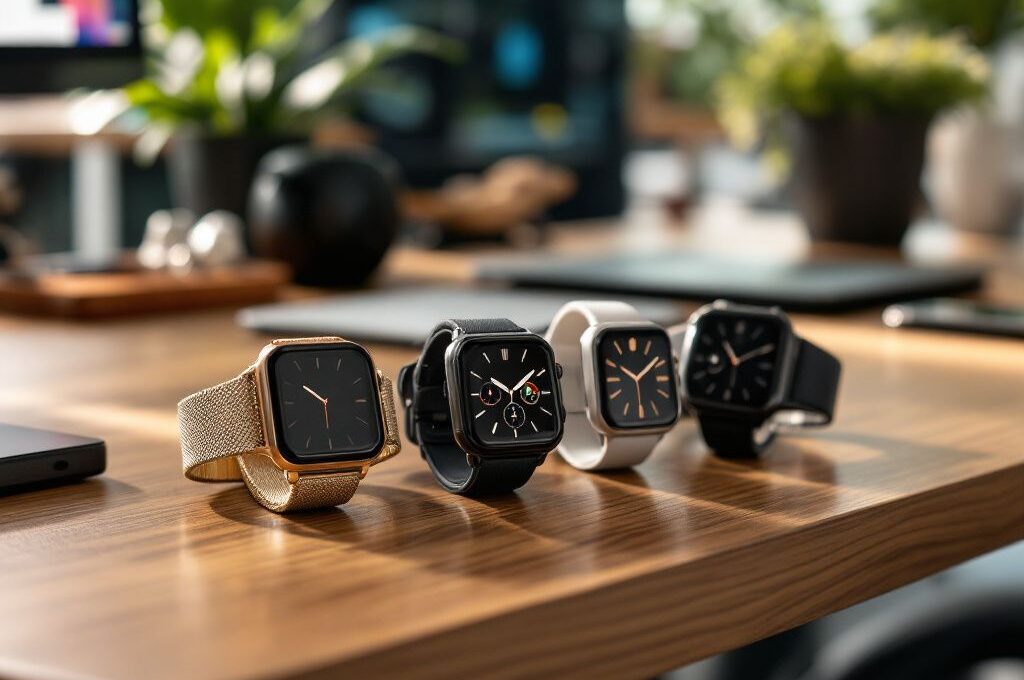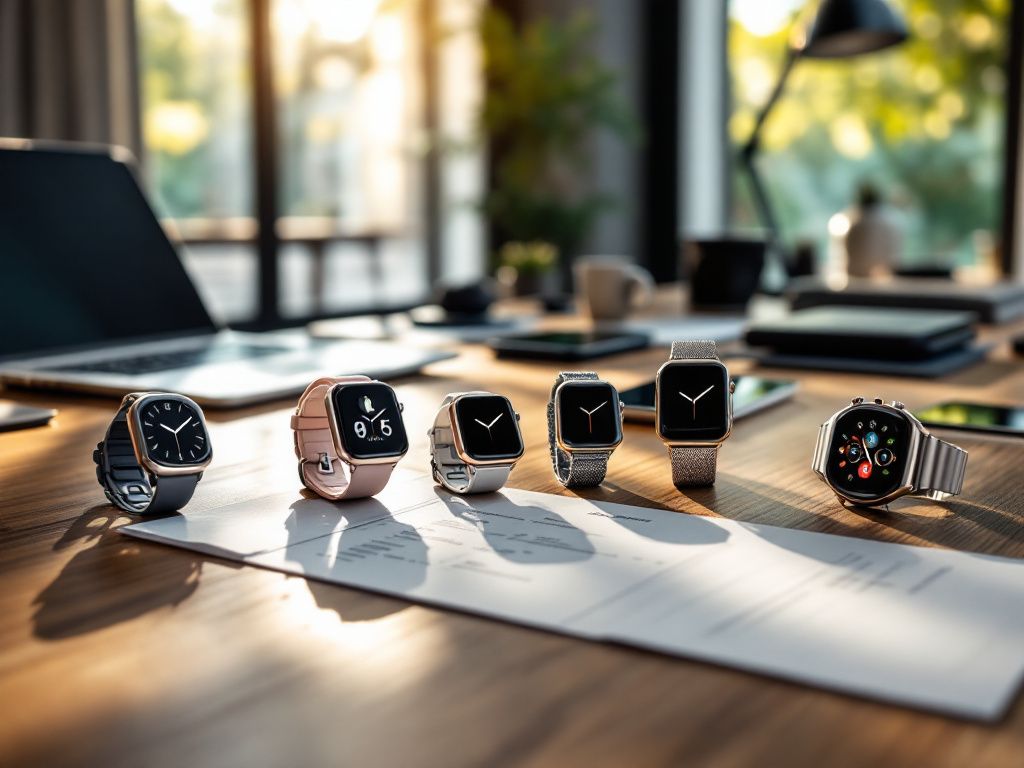
Modern smartwatches have evolved beyond simple timekeeping to become comprehensive health and productivity companions. With advanced features like ECG monitoring, fitness tracking, and seamless smartphone integration, choosing the right device requires careful consideration of compatibility, battery life, and specific needs. Understanding these factors is crucial for making an informed decision.
Choosing the right smartwatch: Essential considerations
Selecting the ideal smartwatch requires careful evaluation of several key factors that directly impact your daily experience and long-term satisfaction with the device. Understanding these considerations ensures you invest in a smartwatch that truly enhances your lifestyle rather than becoming an expensive accessory.
Compatibility and Ecosystem Integration
The most critical factor when choosing a smartwatch is ensuring compatibility with your smartphone. Apple Watch models exclusively work with iPhones, while Samsung Galaxy watches and Google Pixel watches operate on Android devices using Wear OS. This ecosystem dependency means your choice of smartwatch is often predetermined by your phone preference. Cross-platform compatibility remains limited, making it essential to verify device compatibility before making any purchase decision.
Battery Life and Display Performance
Battery life varies dramatically across different smartwatch models, ranging from 24 hours for feature-rich devices to over 100 hours for specialized fitness-focused watches. The display type and size significantly impact both battery consumption and user experience. OLED displays offer vibrant colors and deep blacks but consume more power, while larger screens provide better readability but drain battery faster. Consider your usage patterns when evaluating these specifications.
Health and Fitness Tracking Capabilities
Modern smartwatches excel in health and fitness monitoring, offering features like heart rate tracking, sleep analysis, GPS functionality, and workout detection. Advanced models include ECG monitoring, blood oxygen sensing, and body composition analysis. Fitness enthusiasts should prioritize devices with comprehensive tracking capabilities and long battery life, such as specialized sports watches that can monitor multiple workout types accurately.
Budget-Conscious Recommendations
For budget-conscious consumers, devices like the Amazfit Active 2 at $99 provide excellent value with essential fitness tracking and decent battery life. Tech-savvy users might prefer premium options like the Apple Watch Ultra 2 or Samsung Galaxy Watch Ultra, which offer advanced features and robust performance despite higher price points.

Comparison of the best smartwatches from top brands
The smartwatch market in 2025 showcases remarkable diversity across major manufacturers, each offering distinct advantages tailored to different user preferences and ecosystems. Understanding the competitive landscape helps consumers make informed decisions based on their specific needs and device compatibility.
Apple’s Dominance in the Premium Segment
Apple maintains its leadership position with two standout models that cater to different market segments. The Apple Watch Ultra 2 commands the premium space at $799, featuring a robust 49mm titanium case and an impressive 3000-nit always-on Retina display. This model targets outdoor enthusiasts and professionals requiring maximum durability and visibility in challenging conditions.
In contrast, the Apple Watch SE 2 offers exceptional value at $249, delivering core Apple Watch functionality in a more accessible package. Despite lacking advanced features like ECG and always-on display, it provides the essential health tracking and seamless iOS integration that Apple users expect.
Samsung’s Innovation with Wear OS Integration
Samsung’s Galaxy Watch Ultra represents a significant evolution, priced at $649 and featuring the advanced Exynos W1000 chipset. This model runs Wear OS 5, offering enhanced compatibility beyond Samsung’s ecosystem while maintaining the brand’s signature health monitoring capabilities, including body composition analysis for muscle and fat measurement.
The watch’s 47.4mm case dimensions position it as a direct competitor to Apple’s Ultra model, though Samsung’s approach emphasizes cross-platform functionality and advanced biometric tracking rather than pure ruggedness.
Google’s Refined Design Philosophy
The Google Pixel Watch 3 at $399 showcases Google’s commitment to elegant, classic watch aesthetics. Available in both 41mm and 45mm sizes, it features an even brighter display than its predecessors and extends battery life to 36 hours. The circular design maintains the traditional watch appearance while delivering modern smartwatch functionality optimized for Pixel smartphone users.
OnePlus’s Battery Life Leadership
OnePlus distinguishes itself with the OnePlus Watch 3 at $329.99, delivering an exceptional 120 hours of battery life that surpasses all competitors. This Wear OS device demonstrates that extended usage doesn’t require sacrificing modern features, making it particularly appealing to users prioritizing convenience over frequent charging cycles.

Innovative health and fitness features in modern smartwatches
Modern smartwatches have evolved into sophisticated health monitoring devices, offering clinical-grade features that transform how we track and manage our wellbeing. These wearable technologies now provide comprehensive insights into cardiovascular health, sleep patterns, and fitness performance with remarkable accuracy.
Advanced Cardiovascular Monitoring
The ECG functionality found in devices like the Apple Watch Ultra 2 and Samsung Galaxy Watch Ultra enables users to generate electrocardiograms similar to single-lead medical equipment. This feature can detect irregular heart rhythms and atrial fibrillation, potentially identifying serious cardiac conditions before they become critical. The Garmin Instinct 3 includes continuous heart rate monitoring with advanced algorithms that track resting heart rate trends over time, providing valuable data for cardiovascular fitness assessment.
Blood pressure monitoring capabilities, particularly prominent in Samsung’s Galaxy Watch Ultra, utilize optical sensors to estimate systolic and diastolic readings. While requiring initial calibration with a traditional cuff, these measurements offer convenient daily monitoring for users managing hypertension.
Comprehensive Sleep Analysis
Sleep tracking has become increasingly sophisticated, with Fitbit leading innovations in this area. Modern devices monitor sleep stages including REM, deep, and light sleep phases using accelerometer data and heart rate variability. The Apple Watch Series 10 introduces sleep apnea detection, alerting users to potential breathing disruptions during rest periods. Garmin devices provide detailed sleep scores and recovery metrics, helping athletes optimize their training schedules based on sleep quality.
Precision Fitness Metrics
Workout tracking capabilities now extend beyond basic step counting to include VO2 max measurements, training load analysis, and recovery time recommendations. Garmin’s Body Battery feature uses heart rate variability and stress levels to indicate optimal workout timing, while Fitbit’s Active Zone Minutes encourage users to maintain target heart rate zones for maximum fitness benefits.

Tips for maintaining and optimizing smartwatch performance
Maintaining your smartwatch properly ensures it delivers consistent performance and extends its lifespan significantly. Regular maintenance practices can prevent common issues and keep your device running smoothly for years.
Essential Software Updates and System Optimization
Regular software updates are crucial for optimal smartwatch performance. Enable automatic updates on your device to receive the latest security patches and performance improvements. For Apple Watch users, updates typically arrive monthly, while Wear OS devices receive quarterly updates. Check your watch settings weekly to ensure you haven’t missed critical updates that could affect battery life or sync capabilities.
Clear your smartwatch’s cache periodically by restarting the device or using the built-in storage management tools. This simple step can resolve slow performance and improve app responsiveness significantly.
Battery Care and Longevity Strategies
Proper battery maintenance extends your smartwatch’s operational life considerably. Avoid letting your battery drain completely before charging, as this can damage lithium-ion cells over time. Maintain charge levels between 20% and 80% for optimal battery health.
Disable unnecessary features like always-on displays or continuous heart rate monitoring when not needed. These features can reduce battery life by up to 40% according to recent testing data. Use power-saving modes during extended activities or when connectivity isn’t essential.
Connectivity and Sync Troubleshooting
Connectivity issues often stem from Bluetooth interference or outdated smartphone apps. Keep your smartwatch within 30 feet of your phone for reliable sync performance. Reset network settings if you experience persistent connection problems, and ensure your smartphone’s companion app remains updated to the latest version for seamless data synchronization.

What to remember about choosing smartwatches
The smartwatch market continues to evolve rapidly, with manufacturers pushing boundaries in health monitoring, battery efficiency, and user experience. Future developments point toward enhanced AI integration, improved sensor accuracy, and longer battery life. As technology advances, we can expect even more sophisticated health tracking capabilities and seamless ecosystem integration, making these devices increasingly essential for modern digital lifestyles.